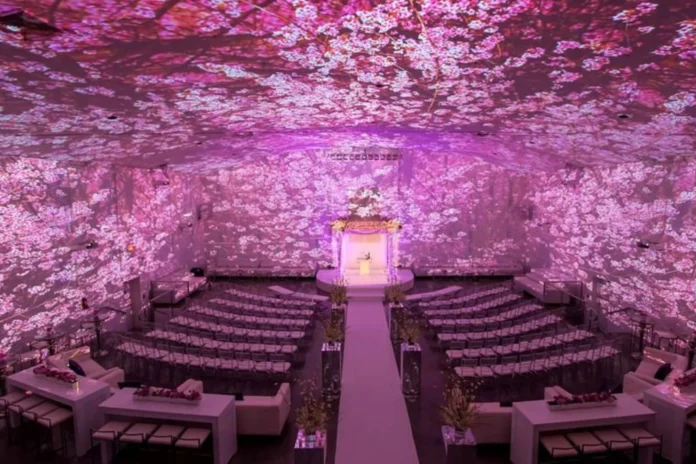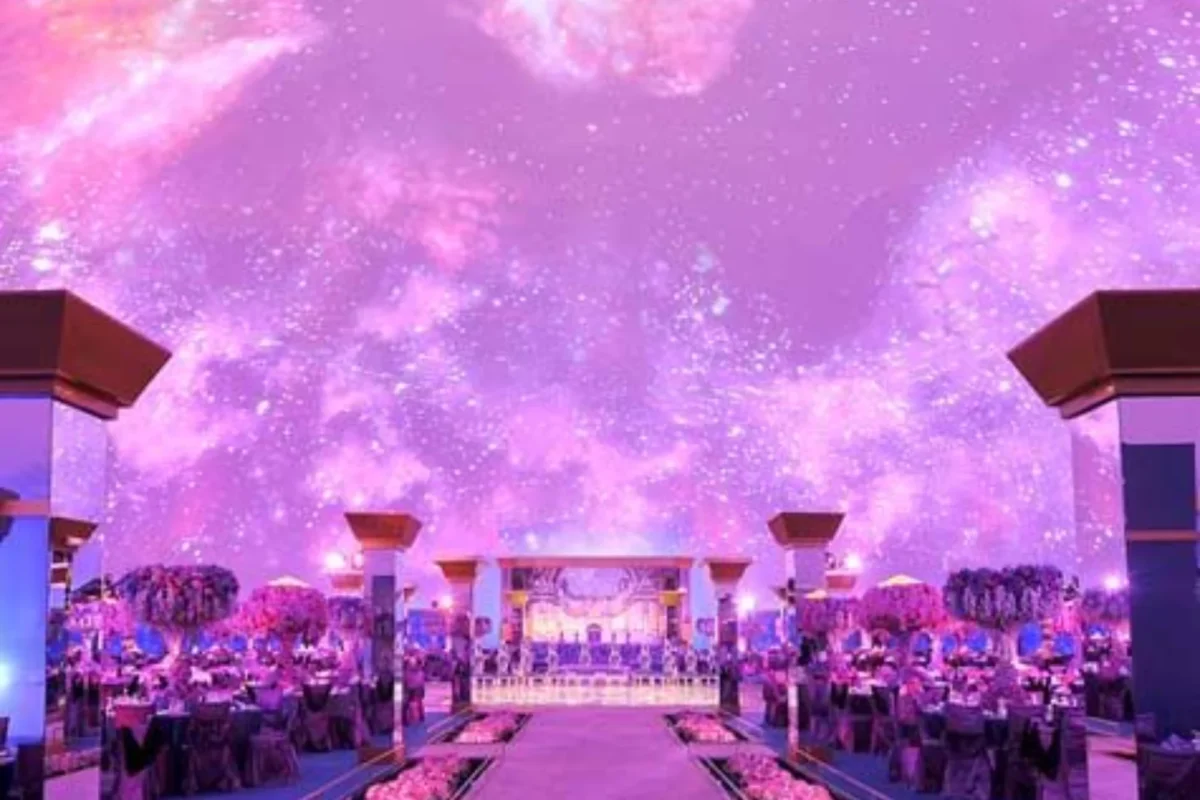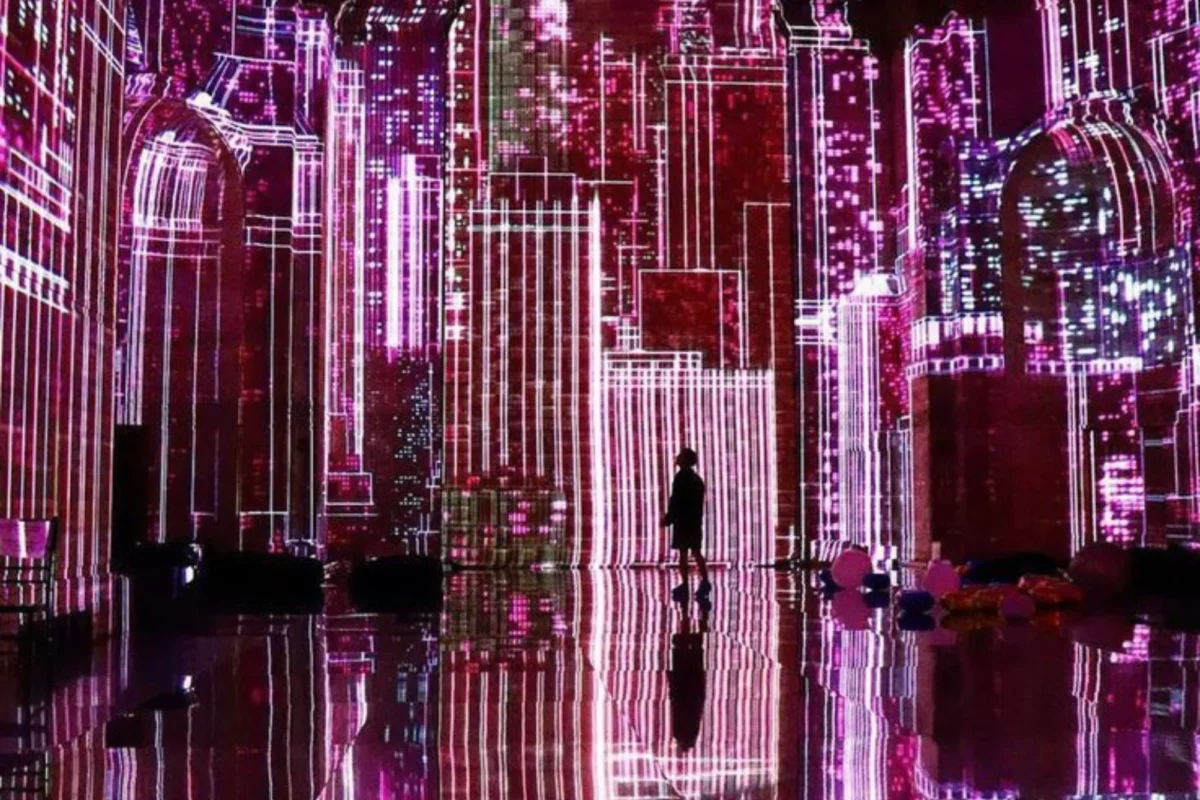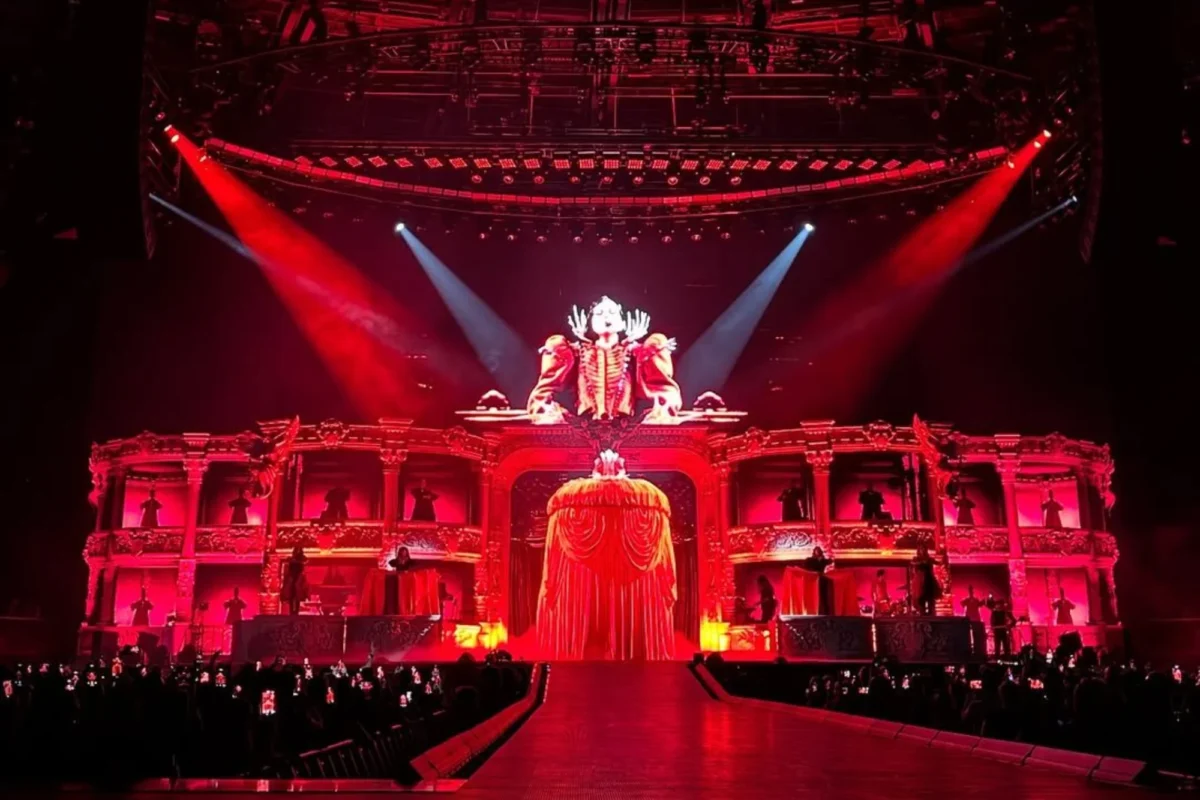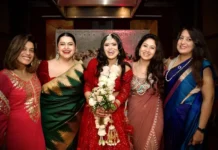Let’s explore the next big trend in the wedding industry that is making huge waves all around the Internet—projection mapping.
Weddings have long been a platform for innovation, as couples look for more and more creative ways to make their wedding day truly unforgettable. From drone photography to virtual reality guest experiences, technology has been increasingly changing the way we celebrate love.
Today, there is a new contender that is mesmerising couples and wedding planners: projection mapping. This breathtaking visual technology is transforming venues into immersive wonderlands, and it could be the next big thing in wedding celebrations. Read this blog further created by our team at Wedding Affair to know more.
Table of Contents:
-
What Is Projection Mapping?
-
The Rise of Projection Mapping in Weddings
-
Creative Applications at Weddings
-
The Practical Considerations
-
Why Couples Are Choosing Projection Mapping
What Is Projection Mapping?
Projection mapping, or spatial augmented reality, is a technology that turns oddly shaped objects, such as buildings, ceilings, wedding cakes, or even dance floors into video displays. Unlike conventional projection, which demands a flat white wall, projection mapping employs custom software to mesh projected images exactly onto three-dimensional surfaces, producing illusions of movement, depth, and change that appear to transcend reality.
The technology has long been applied to large events, theme parks, and business presentations. Its application within the wedding space is an interesting development, bringing what was previously reserved for major production to couples willing to craft enchanting moments.
Read Also: Wedding Planning Mistakes That Can Ruin Your Big Day
The Rise of Projection Mapping in Weddings
The wedding market is evolving toward experiential celebrations. Contemporary couples are not only arranging events; they’re designing experiences that mirror their personality and narrative. Projection mapping is the perfect fit in this new paradigm by providing infinite creative potential.
What was once an occasional high-end amenity at celebrity weddings on a lavish budget has started to filter down to general celebrations. Wedding planners are seeing more and more requests for projection mapping, as couples are attracted to the fact that it can reinvent an area entirely without a lot of physical ornamentation. The technology can transform a drab banquet space into a magic forest, cast a couple’s romance across walls in an event space, or make it seem like dining outside under the stars, all in one night.
Social media has made this trend take off in a huge way. Instagram and TikTok are full of breathtaking wedding projection mapping videos that rack up millions of views. When wedding guests witness walls disappearing into waves or ceilings becoming galaxies, they are going to discuss it for years.
Creative Applications at Weddings
The adaptability of projection mapping is certainly its best feature. Couples are leveraging this technology in progressively creative manners:
Backdrops for the Ceremony: Rather than florally designed arches, other couples are employing projection mapping to design dynamic, shifting backdrops that can change during the course of the ceremony. Picture saying your vows as cherry blossoms holographically bloom in back of you or standing before a mapped image of your dream destination spots.
Cake Mapping: Perhaps the most Insta-worthy use is in projecting animated design onto wedding cakes. The cake is used as a canvas for storytelling, with projections sharing anything from the history of the couple to animated flowers that “grow” across each level. It produces an amazing cake-cutting spectacle that guests will not soon forget.
Dance Floor Makeovers: Projection mapping can transform dance floors into dynamic experiences. Some configurations react to movement, generating ripples as partygoers dance, or show personalized monograms and patterns that shift in line with the tempo of the music.
Venue Metamorphosis: The most spectacular application is to change entire venues. A barn can be turned into a fairy-tale castle, a ballroom can be made to resemble an outdoor garden, or factory spaces can be transformed by softened projected drapery and architectural features, all without physical installation.
Storytelling: Couples are employing projection mapping to tell their love stories in a visually engaging way. Mapped projections can show photo montages, animated timelines, or even reenact important moments in their relationship on venue walls, which makes the guests feel more attached to the couple’s story.
The Practical Considerations
As wonderful as projection mapping is, it’s not without its concerns. The technology is highly planned and professionally executed. The characteristics of the venue are important—the technology best suits environments that can be darkened and venues whose architecture offers appropriate surfaces on which to project.
Technical expertise is essential. This is a successful projection mapping that requires professionals who understand both the technology and how to integrate it seamlessly into the wedding timeline. The setup requires advance site visits, precise measurements, and technical rehearsals.
Weather is something to consider for outdoor locations, as projection mapping is best done in controlled lighting. Although projection can be done outside, it needs more powerful equipment and usually performs better at dusk or nighttime functions.
Why Couples Are Choosing Projection Mapping
Aside from the self-evident “wow factor,” projection mapping has utilitarian advantages that are also attractive to contemporary couples. It’s more environmentally friendly than traditional decorations—there is no wastage of disposable decorations, and reusable equipment can be utilised numerous times. For sustainability-conscious couples, this technology provides a guilt-free option for designing a spectacular ambience.
The technology is also flexible. Couples can transform the overall mood of their space several times during the course of an evening, from romantic and intimate for dinner to energetic and lively for dancing, without having to physically redecorate. This kinetic aspect produces natural transition points between segments of a wedding and maintains guests’ interest throughout the event.
For destination weddings or venues where decorations are prohibited, projection mapping offers an option to customise the area without physically doing so. Historic sites, especially, find this non-invasive decoration technique useful.
Read Also: 6 Bridal Outfit Ideas for Every Post-Wedding Function
Frequently Asked Questions
How early should I schedule projection mapping services?
Optimally, reserve projection mapping services 6-12 months prior to your wedding. The technical staff requires time for site visits, content development, and coordination with your other vendors. Busy dates and experienced providers fill up fast, particularly during peak wedding season.
Yes, but with some conditions. Outdoor projection mapping is most effective at sunset or night when ambient light is low. It needs brighter projectors and is weather-sensitive. Rain, fog, or extreme sunlight can create visual obstructions. Tented outdoor venues are often chosen by couples to have more control over lighting conditions.
Can projection mapping be a total substitute for conventional wedding decorations?
Projection mapping will go a long way toward eliminating the need for standard décor, but couples always tend to use it as an addition instead of an outright replacement. It’s fabulous for setting the mood and reimagining architectural features, but you’ll probably still need centrepieces, flowers, and other tangible décor items for a full visual look.
What types of venues are ideal for projection mapping?
The optimum venues are large, relatively level surfaces (ceilings, walls, floors), lighting control, and sufficient room to position a projector. Ballrooms, warehouses, barns, and newer event spaces are usually suitable. Older buildings with unusual architecture can provide stunning results. Your projection mapping firm will evaluate your venue’s feasibility on an on-site visit.
How long does the setup take?
Setup times differ depending on complexity. Basic applications can be done in 2-4 hours, but complex full-venue mapping may involve an entire day or more. Most businesses get there early on the wedding day or even the day prior to setup to make sure everything is checked and ready to go before guests.

